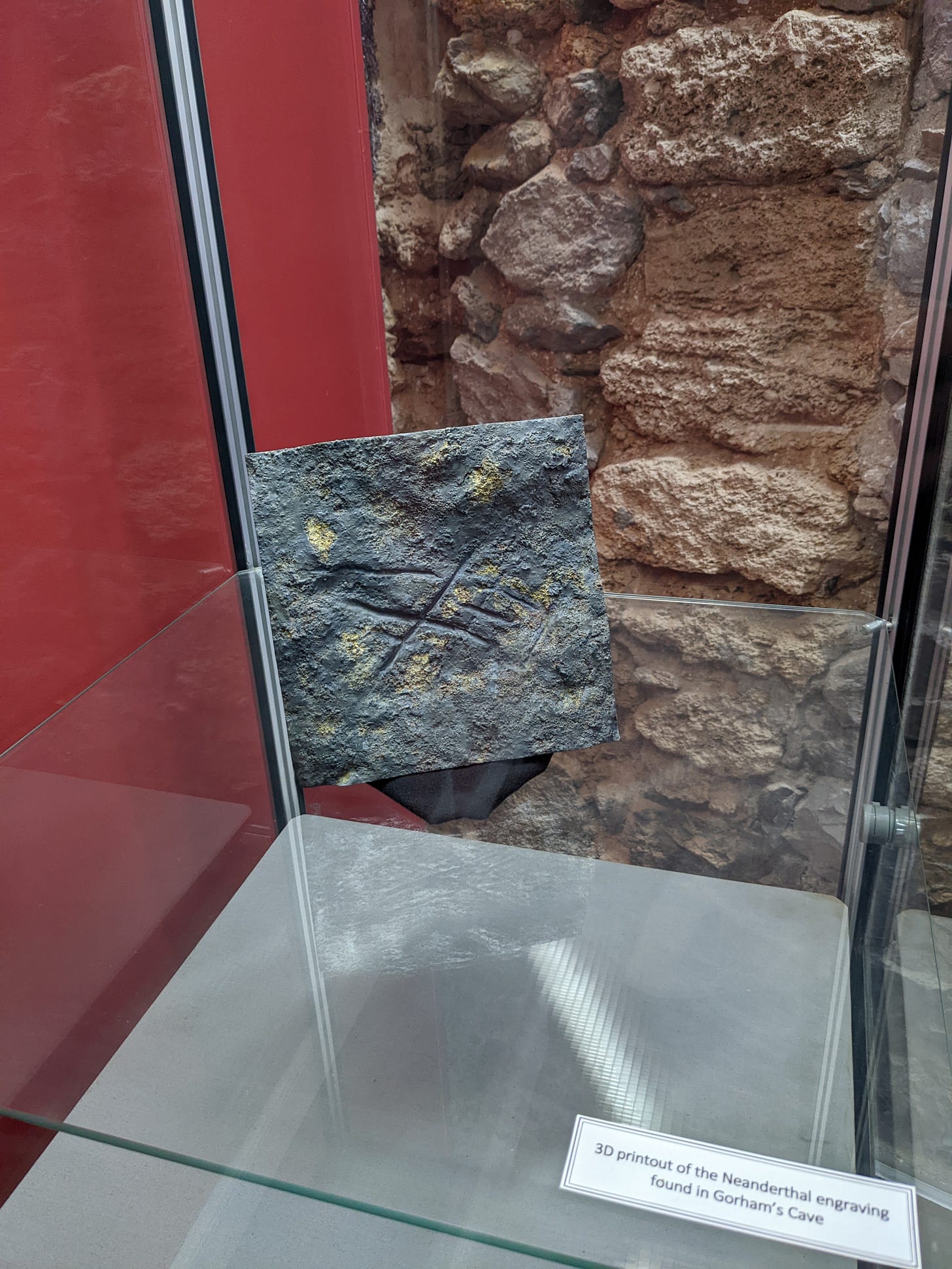A good chunk of my day job at BioLogos is working with Colin on the podcast, “Language of God”. We plagiarized that title from Francis Collins’ influential book, which itself took inspiration from the announcement marking the completion of the Human Genome Project: President Bill Clinton said “today we are learning the language in which God created life” (see the announcement on YouTube, that section is at 4:30).
If DNA can be understood as a kind of language — telling the biological story of who we are — perhaps our archaeological discoveries, from bones and hearths to cave scratches, also speak a kind of language. Bones “tell” us the physical characteristics and abilities of our ancestors, hearths reveal details about their daily lifestyles and communal practices, and cave markings might represent their earliest attempts at symbolic communication.
The “Language of God” episode that dropped today is the first of a two-part series we’ve called “Ancient Humans.” One of our guests, the archeologist Darrell Rohl, noted that less than 1% of our entire human history has been captured in traditional writing. The remaining 99% of our species’ past is accessible only through interpreting fossilized bones and artifacts like those mysterious cave engravings. I can’t help but wonder: how might future archaeologists read the language of our own time? Will these Substack posts be seen as archaeological artifacts, offering glimpses into the life and thoughts of a philosopher/author working his way through the ideas of early 21st century?
Colin and I have been enormously privileged to spend some of our work time exploring sites around the world that have influenced both the “Language of God” podcast and my current book, The Spiritual Journey of Homo Sapiens. From petroglyphs in Azerbaijan, to tombs in Europe, to archaeological museums in America, we’ve experienced firsthand the profound attempts humans have made to communicate across generations. Language, whether encoded in genes, etched on cave walls, or typed into newsletters, shapes our understanding of ourselves and our collective history. Recognizing how rarely humans have left behind written records emphasizes how precious our current written legacy truly is. Thinking about this only deepens my curiosity about how future generations might interpret the language I leave behind in these digital musings.
Writing is uniquely powerful in capturing thought, enabling us to connect across vast stretches of time. Which brings me back to an expedition I attempted a couple of years ago in Gibraltar. Long-term readers of this newsletter might recall a post where I described my disappointment when heavy rains prevented my visit to Gorham’s Cave, where Neanderthal scholar Clive Finlayson discovered what might be considered the earliest “writing”: a crude hashtag scratched into the cave wall some 40,000 years ago. Clive believes these marks may not just be random scribbles but possibly symbolic—perhaps the beginnings of a written record or at least a meaningful message.
Standing in front of such the original ancient “hashtag” would have been remarkable, connecting me to those distant cousins who left behind something more lasting than spoken words around a fire. Instead, I sat in Dr. Finlayson’s office and recorded our conversation about what we can piece together of the kind of creatures Neanderthals were. Then Colin and I sat in an office at the American Museum of Natural History in New York, and talked with Finlayson’s rival, Ian Tattersall, who thinks Neanderthals didn’t have language and so the hashtag was probably just a doodle.
If you’re interested in this sort of thing, give our episode a listen. It can be found on Apple Podcasts, Spotify, and wherever you listen to podcasts—or on the BioLogos website here. Besides Tattersall and Finlayson, we talk to paleoanthropologist Cara Wall-Scheffler and theologian Angela Carpenter. I think it’s a pretty interesting episode.
Of course the episode is relevant to my current writing journey: The Spiritual Journey of Homo Sapiens. Language will have its own chapter in the book… once I finish the part on thinking… which I still haven’t finished. I’m eager to continue unfolding this story—typing away here, confident at least this 1% of history might survive, guiding future readers in understanding their own spiritual journeys. But tomorrow I get to hang out with Francis Collins, who is visiting the BioLogos offices, and then next week I’m off to Los Alamos, NM where I’m speaking to the science and religion club out there in the desert. I’m hoping to work in some other visits to cool old things, which of course I’ll report on.



